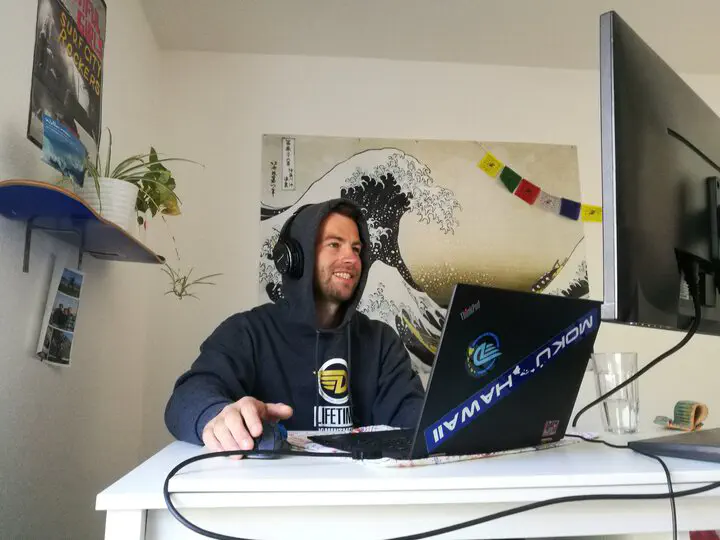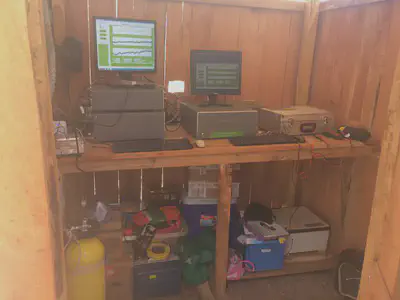What have Isodrones been up to lately?
 Photo credit: Isodrones
Photo credit: IsodronesUnfortunately, we had to cancel our planned big 2020 campaign to Costa Rica, where we wanted to collect another set of longer-term in situ soil/plant/atmosphere water isotope data and accompany this with high-res birds-eye data from our newly developed drones (see below). We were also going to take a slim version of our setup to the REBAMB site (http://rap.ucr.ac.cr/la-reserva-biologica-alberto-manuel-brenes-rebamb-costa-rica) in the rainforest. Well, we postponed the big campaign to Nov 2020 until Apr 2021, and this gives us a bit more time to develop some new exciting stuff. But let’s first look back a bit.
Recap: 2019 Costa Rica campaign
The 2019 campaign was meant as a pre-test of our methods, mainly the in situ isotope monitoring and the thermal and multispectral image acquisition, processing and analysis. Further, our focus here was on investigating strategies of two local tree species (Caoba - Swietenia macrophylla and Tempisque - Sideroxylon capiri) to survive the four months without any rain at extreme temperatures without losing their leaves. Do they rely on deep water? Or what other strategy did these trees develop to survive such extreme situations? And how can we identify this in the future without the massive efforts we are currently investing in order find UAV-derived indicators?
I’ll be honest, we did a big mess at the Horizontes site (https://www.isodrones.de/researchsites/horizontes/) during that first campaign in terms of obtaining baseline data. Let me sum up what we monitored throughout the dry season 2019: Atmospheric parameters (weather station), soil moisture, temperature and water potential, leaf temperature, bi-weekly leaf water potential, LAI, sap flow, soil/plant (root and stem)/atmosphere water isotopes (destructive and in situ), soil respiration, micro-/macronutrients in all compartments, mercury and other trace elements in soils and leaves, TOC/DOC. These data were supported by bi-weekly drone overflights using a thermal camera and a multispectral camera that allows us to derive high-res plant-relevant indicators (NDVI, PRI, EVI,etc.).
We can now say that this was successful as both the ground-based as well as the drone-derived information revealed that the two investigated (both evergreen) species definitely have different water-use and drought-adaptation strategies. Both Kathi and Malkin are about to submit their first papers and we have a couple of others in the making. And this is just the beginning! Now, let’s see what planned for this year. 2020 is definitely a ‘publication year’, but see below that we also have some exciting field plans!
Dry Forest Observatory
Most importantly, we plan to ‘pimp’ our monitoring station @Horizontes by adding solar panels, set up automated cloud upload of the data and equip additional tree species with sap flow and stem water storage sensors. We really want to turn the station that started with our little ‘caseta’
‘Pimp’ my drone & drone-enabled isotope sampling
Malkin and me have been discussing a lot on which drone indicators to use best to infer water use strategies and deep water use by plants. Our main assumption is that if a plant is happily transpiring during an extended drought, this plant must have access to water somewhere. If the upper soil layers are completely dry, it must be deep uptake. Now, if we monitor a plant with UAV-based methods, we can surely see if a plant is green and also if it is stressed (which already might help). But it is the leaf temperature that can give us an idea on transpiration (colder leaves generally mean higher transpiration) and this together with some suitable multispectral indicators really enables an identification of the water use strategy of the particular plant. We found that the reaction speed of different tree species to irrigation events also can tell about water use strategies. So, from completely tapping in the dark, our picture of how deep water uptake can only be identified by drones is become more and more clear. For 2020, we added another multispectral camera to our drone
and improved the calibration process of the thermal imaging. Malkin also built his first sampling drone for water isotopes (we will make a separate blog on this once it is completely functional)!
Finally, there’s another good news: In early 2020, Alberto Iraheta from Honduras joined Isodrones as a PhD student. Alberto is our person on-site in Costa Rica and very enthusiastic about water isotopes. The topic of his thesis will on be groundwater recharge estimations using in situ methods and isotopic labeling. Welcome Albi!